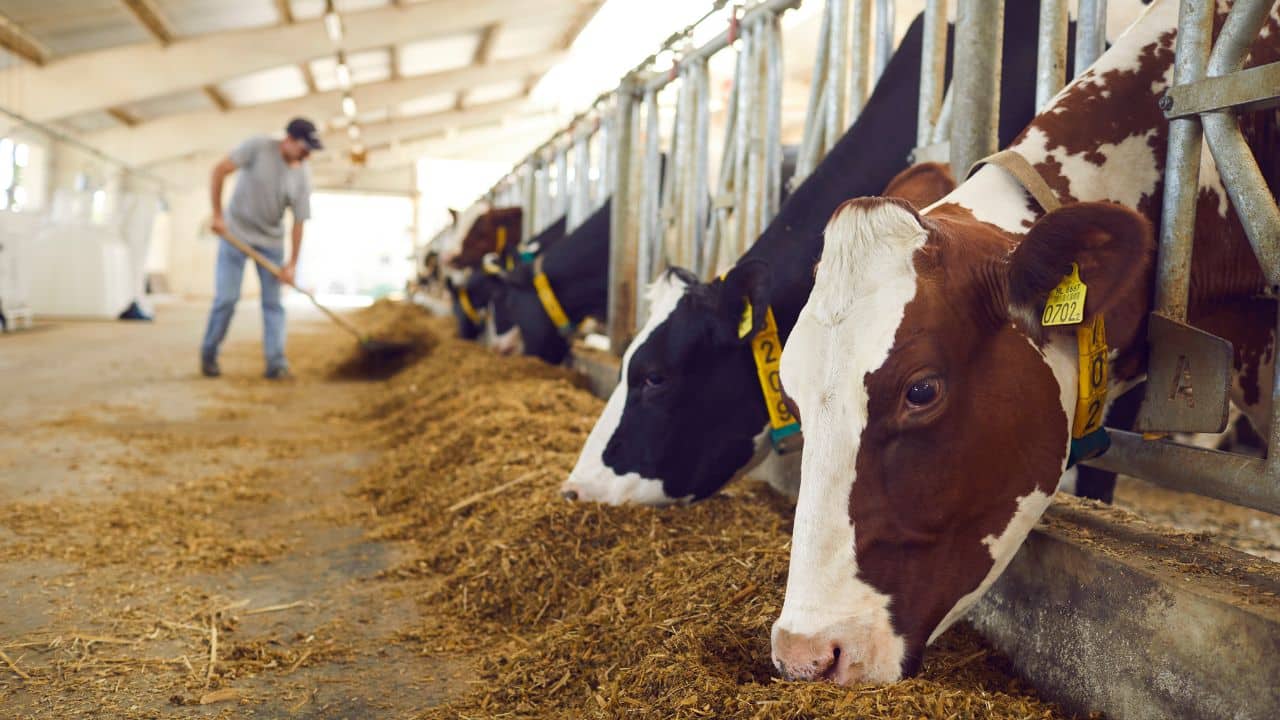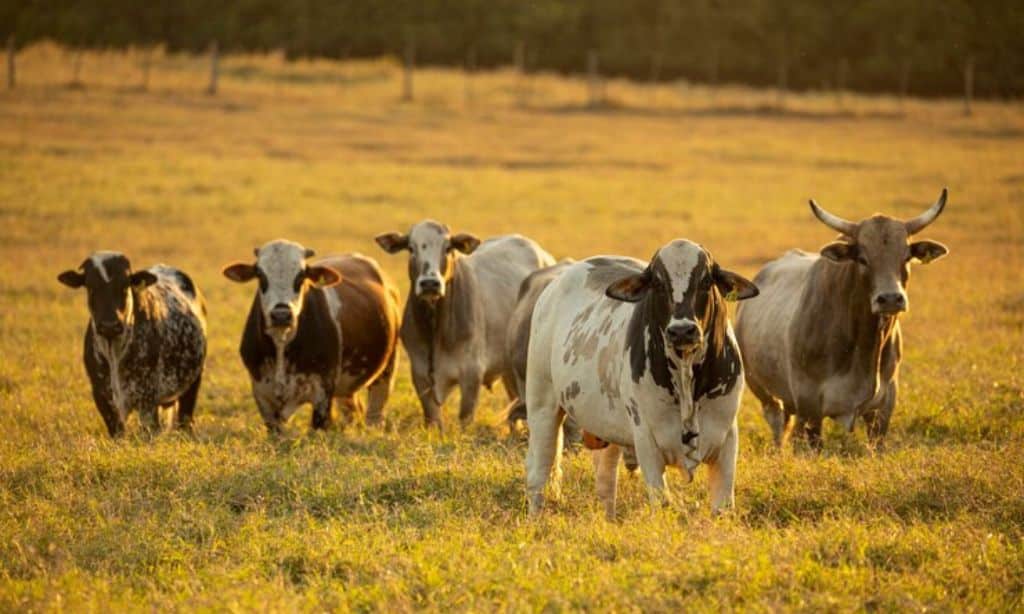Livestock farming is a cornerstone of the U.S. agricultural economy. It provides essential products like meat, milk, wool, and eggs while contributing significantly to rural livelihoods and the national economy.
With evolving market demands and technological advancements, certain livestock have proven to be more profitable than others. Whether you’re an experienced farmer or a beginner exploring the agricultural industry, identifying the most lucrative livestock to raise is crucial for maximizing your returns.
In this article, we’ll take an in-depth look at the 10 most profitable livestock options, highlighting their care needs, market potential, and profitability.
1. Cattle
Why Raise Cattle?
Cattle farming dominates the livestock sector in the USA, thanks to the demand for beef and dairy products. The industry is backed by a robust infrastructure, including auction markets, processing plants, and export opportunities.
- Beef Cattle: Breeds like Angus and Hereford are highly sought after for their marbled meat, which fetches premium prices in both domestic and international markets. Grass-fed beef, in particular, is gaining popularity due to its health benefits and sustainability.
- Dairy Cattle: Holsteins and Jerseys lead the dairy industry, producing large quantities of milk. Milk products like cheese, butter, and yogurt offer farmers additional revenue streams.
Tips for Success
- Implement rotational grazing to maximize pasture efficiency.
- Invest in herd health by scheduling routine veterinary visits and vaccinations.
- Utilize technology like automatic feeders or milking machines to reduce labor costs and boost productivity.
Market Opportunities
In 2023, U.S. beef consumption exceeded 27 billion pounds, and dairy products remained a staple in households, ensuring steady demand for cattle farmers.
2. Poultry
Why Poultry Farming Is Profitable
Chickens are one of the easiest and most rewarding livestock to raise. They offer dual-income streams: eggs and meat. Additionally, advancements in poultry farming, such as controlled-environment housing, have improved productivity and disease resistance.
- Egg Production: A single hen can produce up to 300 eggs per year, making laying hens a lucrative investment.
- Broiler Chickens: Meat chickens are market-ready in just 6–8 weeks, allowing for rapid turnover and consistent cash flow.
Care Requirements
- Maintain proper biosecurity to prevent diseases like avian flu.
- Provide high-protein feed and clean water to maximize growth and egg production.
- Consider free-range or organic systems to cater to niche markets willing to pay premium prices.
Market Trends
Eggs are a dietary staple, while chicken is the most consumed meat in the U.S., ensuring a steady market. Organic, cage-free, and pasture-raised products command higher prices, making it an ideal option for small-scale farmers.
3. Pigs
A High-Demand Livestock Option
Pork is the most widely consumed meat worldwide, and pig farming in the U.S. benefits from both domestic consumption and export opportunities.
- Profitability: Pigs grow rapidly, reaching market weight of 250–300 pounds in just six months. This fast growth translates to quick financial returns.
- Popular Breeds: Berkshire pigs are known for their marbled meat, while Yorkshire pigs are valued for their lean pork.
Best Practices for Pig Farming
- Maintain clean and well-ventilated housing to minimize the risk of diseases like swine flu.
- Feed pigs a nutrient-rich diet for faster weight gain and better meat quality.
- Explore niche markets for organic or pasture-raised pork, which are increasingly in demand.
Economic Impact
The U.S. exports over 2.5 million metric tons of pork annually, making it a highly profitable livestock option for farmers with access to large-scale production facilities.
4. Goats
A Versatile Livestock Choice
Goats are an excellent livestock option due to their adaptability, low maintenance needs, and multiple revenue streams, including meat, milk, and fiber.
- Dairy Goats: Breeds like Nubian and Saanen are renowned for their high milk production, which is used in cheese, yogurt, and cosmetic products.
- Meat Goats: Boer goats are the go-to breed for flavorful meat, which is in high demand among ethnic and gourmet markets.
- Fiber Production: Angora goats produce mohair, a luxurious fiber used in high-end clothing.
Care and Management
- Goats are highly adaptable but require protection from predators like coyotes.
- Provide a balanced diet of hay, grains, and minerals for optimal health and productivity.
Market Insights
The growing demand for goat cheese and meat, coupled with the rising popularity of sustainable fibers, makes goat farming a highly lucrative venture.
5. Sheep
Why Sheep Farming Is Profitable
Sheep are valued for their meat, wool, and, to a lesser extent, milk. The diverse income streams make them a profitable choice for both small and large-scale farmers.
- Meat Production: Lamb is considered a delicacy, especially during holidays like Easter and Christmas.
- Wool Production: Merino sheep produce fine wool that is highly sought after in the textile industry.
Key Care Tips
- Implement predator control measures, such as using guard dogs or secure fencing.
- Practice rotational grazing to maintain pasture health and reduce feed costs.
- Shear sheep annually to maintain wool quality and prevent overheating.
Market Potential
Sheep products cater to niche markets, particularly ethnic communities and high-end restaurants, ensuring a steady demand throughout the year.
6. Honey Bees
An Unconventional Yet Profitable Choice
Beekeeping is a sustainable and rewarding agricultural practice. Honey bees not only produce valuable products like honey and beeswax but also provide essential pollination services to farmers.
- Products: In addition to honey, bees produce royal jelly, propolis, and beeswax, all of which are in high demand.
- Pollination Services: Beekeepers can lease their hives to pollinate crops like almonds, blueberries, and apples, earning additional income.
Care Requirements
- Ensure hives are protected from pests like mites and beetles.
- Position hives near diverse flowering plants to maximize honey production.
Market Trends
With the increasing popularity of natural sweeteners and organic products, honey remains a top choice for health-conscious consumers.
7. Alpacas
A Niche but Lucrative Market
Alpacas are raised primarily for their soft, luxurious fleece, which is used to produce high-end clothing and textiles.
- Breeding Opportunities: Selling alpacas to other farmers offers an additional income stream.
- Low Maintenance: Alpacas are easy to care for, requiring minimal feed and veterinary intervention.
Tips for Alpaca Farming
- Maintain clean and spacious enclosures to ensure their health.
- Shear alpacas annually to harvest their fleece, which can fetch premium prices.
Market Insights
Eco-conscious consumers are driving demand for sustainable fibers, positioning alpaca farming as a profitable business model.
8. Rabbits
A Small-Scale Farming Option
Rabbits are an ideal choice for farmers with limited space and resources. They are prolific breeders and provide multiple income streams from meat and fur.
- Meat Production: Rabbit meat is lean, healthy, and highly nutritious, appealing to health-conscious consumers.
- Fiber: Angora rabbits produce wool used in high-end garments.
Care Needs
- Provide clean, ventilated housing and a balanced diet.
- Monitor rabbits regularly for signs of disease, as they can be vulnerable to infections.
Market Trends
Rabbit farming caters to specialty markets, making it a lucrative option for small-scale farmers.
9. Turkeys
Seasonal yet Rewarding
Turkeys are primarily raised for meat, with peak demand occurring during Thanksgiving and Christmas.
- Popular Breeds: Heritage breeds like Broad Breasted White are favored for their fast growth and tender meat.
Tips for Raising Turkeys
- Provide turkeys with spacious, clean housing and a protein-rich diet.
- Explore free-range or organic systems to target premium markets.
Economic Impact
Despite being a seasonal product, turkeys can generate significant income during peak holiday periods.
10. Ducks
Why Choose Ducks?
Duck farming offers versatility, with income streams from eggs, meat, and feathers.
- Eggs: Duck eggs are richer and larger than chicken eggs, making them a favorite in gourmet cooking.
- Meat: Breeds like Pekin ducks are popular for their tender, flavorful meat.
Care Requirements
- Ducks require access to water for swimming and foraging.
- They are hardy animals, capable of thriving in various climates.
Market Opportunities
Ducks cater to niche markets, particularly ethnic communities and high-end restaurants.
Takeaways
Livestock farming in the USA presents diverse opportunities for profitability, catering to local and global markets. Choosing the right livestock depends on factors like available resources, market access, and personal expertise. By focusing on high-demand products and implementing efficient farming practices, you can maximize your returns and contribute to the agricultural economy.








































